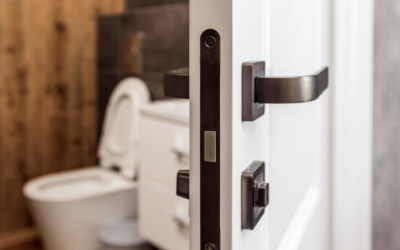
The Importance of Accessible Doors
Accessible doors are crucial for individuals with disabilities, enabling them to move freely and without barriers. Whether it’s someone using a wheelchair, a person with a visual impairment, or someone who experiences difficulties with mobility, accessible doors can significantly impact their ability to navigate through different spaces. By focusing on inclusive design, we can create environments that cater to all users, embodying the principles of equality and respect.
At Finewood Doors we understand that accessibility is not just a feature but a fundamental aspect of inclusive door design. The importance of accessible door design in public and private spaces cannot be overstated, as these features ensure that everyone, regardless of ability, can enter and exit buildings safely and independently. Accessible door designs are a vital aspect of inclusive architecture and are essential for ensuring that everyone, regardless of their physical abilities, can access spaces safely and independently.
Key Features of Accessible Doors
Width and Clearance
One of the most critical aspects of an accessible door is its width. To accommodate wheelchairs and mobility aids, doors need to be wide enough. In the UK, regulations suggest a clear opening width of at least 800mm, but wider dimensions are recommended for enhanced accessibility. Additionally, the surrounding area must be clear of obstructions to allow easy manoeuvrability for wheelchair users or individuals using other mobility aids.
Thresholds and Flooring
The threshold of a door—the area at the bottom of the frame—should be designed to be as flat as possible. High thresholds can be a trip hazard and may be difficult for wheelchairs to cross. Opting for a level threshold or one that is only slightly raised can help prevent these issues, ensuring a smoother transition from one space to another.
Automatic and Power-Assisted Doors
Automatic doors, or those that offer power assistance, can be incredibly beneficial for people who find it challenging to open doors manually. These doors typically operate with sensors or push-buttons and allow for hands-free or minimal effort entry and exit, which is essential for individuals with limited upper body strength or those who carry items frequently.
Handle Design and Locking Mechanisms
The design of door handles and locking mechanisms also plays a vital role in accessibility. Lever handles, for instance, are easier to operate than round knobs, especially for people with limited hand dexterity. These handles should be placed at an appropriate height, generally between 900mm to 1100mm from the floor, to cater to the reach of both standing adults and seated individuals.
Visual Considerations
For those with visual impairments, doors need to have high visual contrast compared to their surroundings, making them easier to identify. Additionally, features like glass panels can help let in light and allow visually impaired users to see through the door before opening it, adding an element of safety.
Signage
Clear signage is essential, not just to indicate the functionality of the door (e.g., whether it swings outwards or slides) but also to assist in navigation. Signage that includes Braille and high-contrast visuals can be incredibly helpful for visually impaired users.
The Role of Legislation and Guidelines
In the UK, the Equality Act 2010 requires that reasonable adjustments be made in public spaces to prevent disabled people from being put at a substantial disadvantage. This legislation extends to the accessibility of doors in buildings. Building regulations also specify standards that ensure new constructions and renovations adhere to accessible design principles, including those specific to doors.
Why Focus on Accessible Door Design?
Focusing on accessible door design is not only a legal obligation but a moral one as well. By implementing these features, businesses and public entities demonstrate their commitment to inclusivity and equality. For individuals with disabilities, these adjustments make a significant difference in their daily interactions and overall quality of life.



